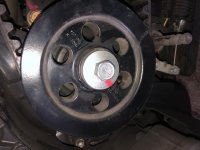EdMat
Well-known member
The majority seem to think, like you, that downshifting has no bearing on the front pulley red dust issue. So, I'm inclined to think that's a myth.
Does anyone know what causes the problem, which doesn't appear to be limited to just certain models or years?
You will notice that when downshifting manually or upshifting the good ole computer does a quick RPM match and it's a fairly uneventful and smooth process, that is IF you are NOT manually manipulating the throttle at the same time.
The only way we will know the cause for sure is if someone from Can-Am speaks out or some metallurgist and engineers get involved. My bet goes to we will still be typing about this five years from now.

